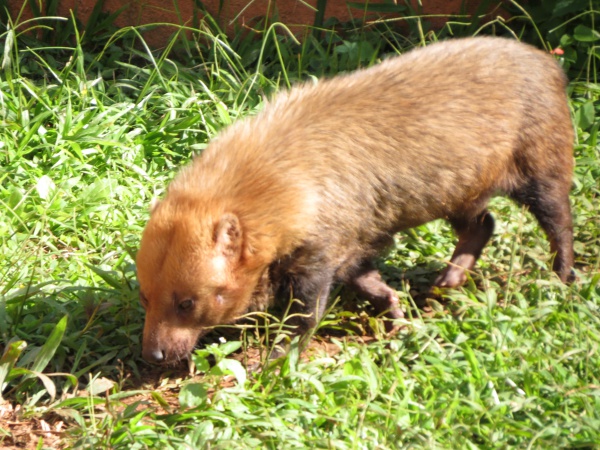Facts About Bush dog
The bush dog is a fascinating yet elusive canid species native to Central and South America. Though rare in many regions, they are more frequently found in Suriname, Guyana, and Peru. This species was first identified by Peter Wilhelm Lund, who discovered their fossils in Brazilian caves. Interestingly, the bush dog is the only species in the genus *Speothos*. Genetic studies suggest that its closest relatives are either the maned wolf or the African wild dog. Currently, the bush dog is classified as Near Threatened by the IUCN.
In Brazil, locals refer to this animal as "cachorro-vinagre" or "cachorro-do-mato." Meanwhile, in Spanish-speaking countries, it is known by various names such as "perro vinagre" "zorro vinagre" "perro de agua" or "perro de monte."
Adult bush dogs have soft, long, brownish-tan fur and a distinctive bushy tail. Younger bush dogs have black fur. Their diet is strictly carnivorous, and they possess unique dental features to support this lifestyle. One notable adaptation is their partially webbed toes, which make them excellent swimmers.
Bush dogs inhabit various regions from Costa Rica to central Bolivia and southern Brazil. They prefer lowland forests, wet savannas, and areas near rivers. There are three recognized subspecies, each adapted to their specific geographic locations.
These animals are diurnal hunters, with their primary prey being large rodents such as pacas, agoutis, and capybaras. Typically hunting in packs, they showcase their social and cooperative nature. Bush dogs breed throughout the year, with a gestation period ranging from 65 to 83 days, resulting in litters of 3 to 6 pups.
Bush dogs are known for their unique behaviors. They often use hollow logs for shelter and have developed sophisticated hunting strategies that involve close coordination within the pack. Their social structure is quite complex, with only the dominant breeding pair reproducing, while other pack members help raise the young.

 Peru
Peru